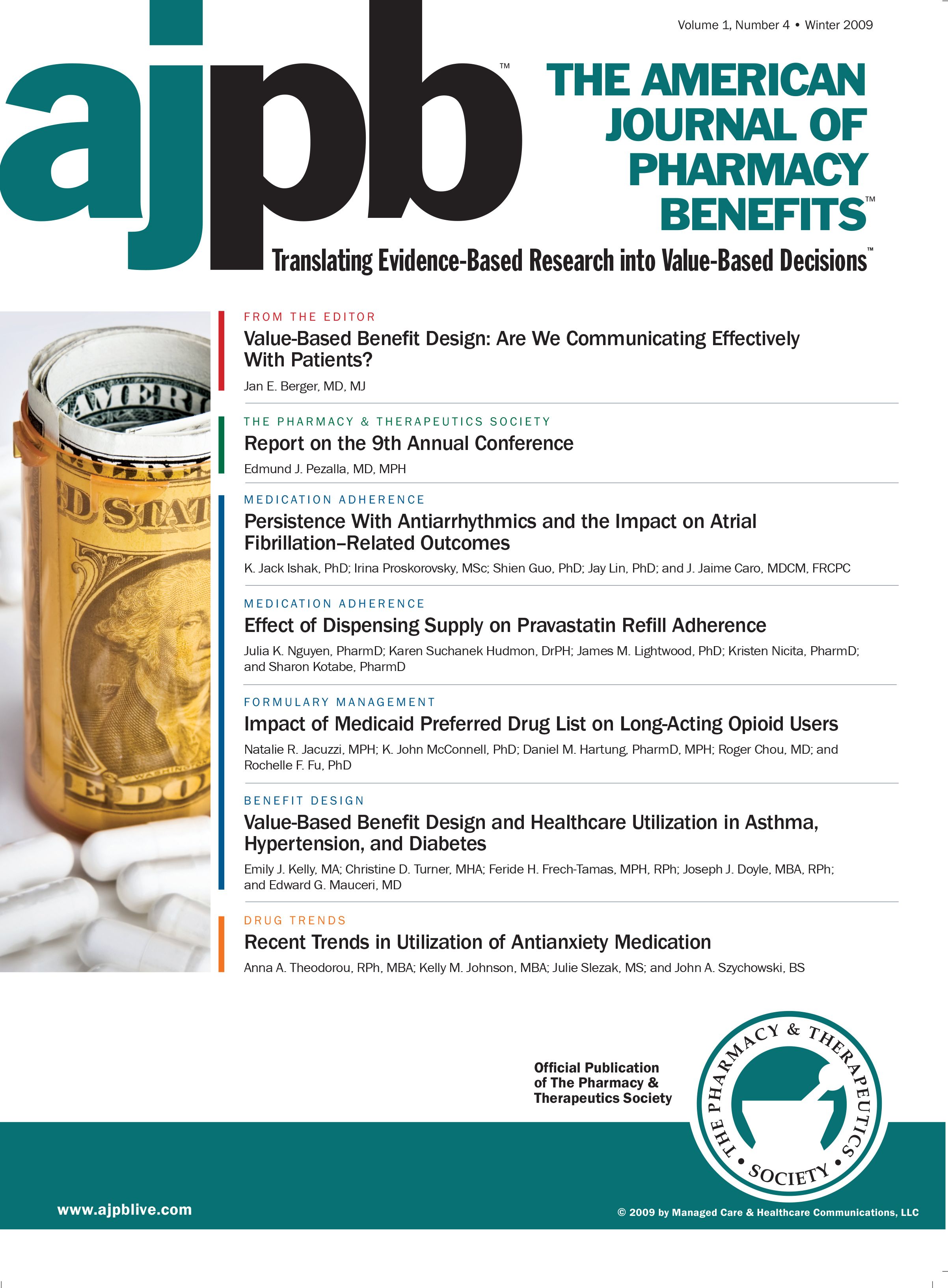Publication
Article
AJPB® Translating Evidence-Based Research Into Value-Based Decisions®
Report on the 9th Annual Conference of The Pharmacy & Therapeutics Society
Author(s):
In the President�s Address, Dr Pezalla observed that any healthcare reform will require the hard work of managing both the cost and quality of care.
The President’s Address
“The reform of healthcare delivery is but one challenge facing members of The Pharmacy & Therapeutics Society,” stated Ed Pezalla, MD, president of the organization. He explained that most of the debate on healthcare reform has centered on cost of insurance and payment reform, and the potential for a public insurance coverage option to compete with private insurers. “Eventually, something will come out of Congress, and the hard work of managing the cost and quality of care will get under way under this new framework,” said Dr. Pezalla.
Virtually any healthcare reform bill signed by President Obama will increase the number of insured Americans. As we cover more people, Dr. Pezalla believes generics will play “an increasingly important role. A lot of pent-up demand for access to medications will have to be addressed with generic medications.” Generics are available in most major therapeutic categories, and upcoming patent expirations will spur the introduction of more nonproprietary agents. “A larger number of people will be taking generics for a long time, because these medications are very effective,” he said, noting that generic dispensing rates, now in the 60% range, will rise over the next several years to 80%.
Generics alone, however, will not manage the coming wave of newly insured. “Increasing numbers of people will need very expensive [specialty] medications,” stated Dr. Pezalla. He is worried that providing affordable access to specialty medications for the population of presently uninsured who may benefit most from their use may be a costly endeavor.
He observed that better utilization of technology and data is necessary to manage the disorders of newly covered individuals. In terms of benefit design, he envisioned case management and intensive disease management as the best way to manage the newly covered Americans who can benefit from specialty medications. “Pharmaceuticals are a component of cost in the healthcare system,” he commented, “but they are the means to an end—to achieve good outcomes in the treatment of disease.”
A public option likely will place more decision making in the hands of the consumers. However, neither they nor providers are well prepared to enter this next stage in America’s healthcare evolution. Overall, Dr. Pezalla believes we need a better and faster national mechanism to bring evidence gained in clinical trials into practice. He pointed to medical and surgical procedures as a prime example: “We lack a great deal of evidence in terms of procedures. They are not regulated by the Food and Drug Administration or other bodies. Often, they are not subject to controlled trials.” Dr. Pezalla stated that comparative effectiveness research must play a prominent role, with evidence that can be translated into practice.
If private plans are to compete with a public option, they will need to aggressively manage cost through the use of narrower formularies and probably fewer 3-tier copayment plans. They will need to evaluate total care protocols and all aspects of medication therapy (eg, as in oncology care) rather than just 1 pharmaceutical. “Health plans will need more partnerships with the pharmaceutical companies to devise innovative contracting around guaranteed outcomes, appropriate use, and patient adherence,” he said.
Medications that have required Risk Evaluation and Mitigation Strategies (REMS) represent another challenge for P&T decision makers. Agents with associated REMS programs may be made preferred products because their increased level of scrutiny implies greater safety, Dr. Pezalla commented. “Or they may be avoided as having complex REMS requirements, especially if other medications are available.”
Because not all comparative effectiveness research will be based on randomized controlled trials, P&T committee members will be required to understand complex statistical analysis, according to Dr. Pezalla, and “this skill is not currently in every P&T committee’s toolbox.”
“The pharmaceutical industry and P&T committees face an increasingly complex world,” concluded Dr. Pezalla. “One of our greatest challenges is to disseminate new tools for decision makers on the P&T committees. The Pharmacy & Therapeutics Society is a neutral conduit in providing these sorts of skills to P&T committee members.”







